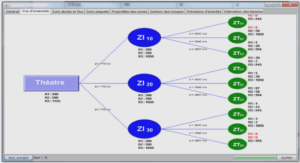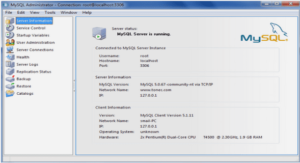Pavement distresses substantially impact the driving comfort, the vehicle operating costs and the road safety. The main causes of pavement distresses are: poor construction, fatigue due to heavy traffic, and natural factors such as water action and extreme temperature fluctuations. A reliable pavement distress detection tool would help to collect efficiently pavement distress data, to characterize road conditions and to identify the causes of pavement deterioration. The diagnostic of the causes of pavement deterioration is needed to select the appropriate intervention by solving the source of the problem rather than applying an inadequate treatment which will deteriorate rapidly.
Conventional assessment methods such as visual inspections, 2D computer vision methods, and 3D reconstruction methods, can detect pavement distresses and evaluate the pavement quality. Nevertheless, these methods are time-consuming and expensive, and may be inefficient especially in cities where road network is dense and subject to high volume traffic. Therefore, finding an effective tool to detect and classify pavement distress, such as deformation and cracks, is crucial to maintain roads in good condition, reduce user costs, and improve traffic safety.
Many inspection methods for pavement distress detection and classification are developed for commercial use. These methods fall in two categories: automated inspection and manual inspection. Automated methods rely on special equipment to detect pavement distresses. For instance, cameras are used to detect distresses such as cracks, potholes, and patches. However, cameras are not suitable to detect polished aggregate, raveling, and water bleeding. 3D sensors are more suitable to detect almost all distresses. Other sensors are also deployed to detect pavement distresses. For instance, accelerometer, microphone, sonar, and pressure sensors are used. However, these sensors are limited to specific types of distresses.
2D images taken by a camera and 3D images taken by 3D sensors, alongside the manual methods, are the common methods used in the detection of pavement distresses. Nevertheless, these three techniques face several limitations related to their efficiency, reliability, and price. Therefore, researchers are constantly trying to overcome those limitations by developing an efficient, reliable, and a low-cost pavement distress detection tool.
In this research, we address the aforementioned limitations by testing a low-cost solution based on 2D and 3D imagery to detect pavement distresses. We expect that this solution is more convenient by adopting onboard self-driving car sensors. And since self-driving cars are expected to be widely used in the future, exploiting their onboard technologies to assess road conditions may simplify the pavement data collection process, reduce its associate costs, allow to collect more data and therefore, improve the pavement inspection service. Furthermore, using the onboard self-driving cars’ sensors for pavement distress detection eliminates the need for a dedicated external and expensive equipment to evaluate the pavement conditions.
Self-driving cars adopt multiple sensing technologies to map the surrounding environment, these technologies use a Light Detecting and Ranging, also known as LiDARs, radio detection and ranging, radars, cameras, and ultrasonic sensors in addition to other different sensors. This research focuses on using the two main vision sensing components of self-driving cars: 3D LiDAR technology and 2D camera.
Pavement and Distress Types
Construction engineers study different factors while designing or rehabilitating roads. The cost and the lifetime of the used materials, the maintenance cost, the traffic volume, and the climatic conditions are some of these factors. The Distress Identification Manual (DIM) for the LongTerm Pavement Performance Program (LTPP) (Miller & Bellinger, 2014), inspect pavement distresses on three different types of pavements: (1) pavements with asphalt concrete surfaces, (2) pavements with jointed Portland cement concrete surfaces, and (3) pavements with continuously reinforced concrete surfaces. In the following section, we briefly present the aforementioned types of pavements and what distresses are prone to develop on each, according to the LTPP Manual.
Pavement with Asphalt Concrete Surface
Asphalt Concrete-surface Pavement (ACP) is a common type of roads. Since the beginning of the twentieth century, road construction engineers use ACP (Polaczyk et al., 2019), which has relatively low-cost materials and it is easy to maintain compared to other pavements surfaces; however, it is considered as the less environmental friendly among the other common pavement surfaces. According to LTPP, ACP is susceptible to 15 different distress types that fall into five categories:
1. Cracking – Many possible reasons lead to different types of cracking, mainly fatigue in the asphalt surface under high traffic load, or harsh weather conditions;
2. Patching and potholes – Patching: a road area covered with new materials. Potholes: Depressions in the surface characterized by their depth and their area;
3. Surface deformation – Grooves on the wheel path caused by the high traffic load, overweight vehicles, or a failure in the pavement construction material;
4. Surface defects – Bleeding: It occurs when the asphalt binder expel through the aggregate due to high temperature. A bleeding surface may be characterized by its shiny, reflective surface, its fading texture and surface discolouring. Polished aggregate: the aggregate level above the asphalt surface starts to erode. Ravelling is characterized by the loss of surface aggregate;
5. Miscellaneous distresses – Lane to shoulder drop off: a drop off in the level of the road between the lane and the shoulder. Water bleeding: water leaks from joints or cracks.
Pavement with Jointed Portland Cement Concrete Surface
Jointed Portland cement concrete-surfaced pavement, or JCP, is another popular choice for road construction. JCP is composed of Portland cement concrete (PCC) constructed on top of the subgrade or the base course.
Pavement with Continuously Reinforced Concrete Surface
Continuously reinforced concrete pavement or CRCP is another type of pavements that has a long-term service life under harsh environmental conditions, temperature fluctuations, and heavy traffic (Tyson & Tayabji, 2012). CRCP has no joints, it’s a single rigid construction reinforced with steel bars. A well-performing CRCP has a uniform transversal crack pattern. The uniform crack pattern reflects the consistency of the concrete mixture (Tyson & Tayabji, 2012). LTPP categorize CRCP distresses into three categories: (1) cracking, (2) surface defects, and (3) Miscellaneous distresses.
Manual Inspection
Collecting pavement distress data is a crucial task to maintain roads and assess their condition. Different researchers and organizations develop distress catalogues that provide descriptions and methods for measuring pavement distresses and quantify their severity level. For instance, the Distress Identification Manual for the Long-Term Pavement Performance Program (LTPP Manual) developed by the US Department of Transportation, targeting United States and Canada road networks, offers a consistent method for a manual distress data collection (Miller & Bellinger, 2014; Ragnoli et al., 2018). ASTMD-6433 (D6433-18, 2018) also provides a standardization to identify and classify pavement distresses. It quantifies the pavement conditions with visual surveys using the Pavement Condition Index (PCI). In Europe, standards on distress identification and management are limited to the French Institute of Science and Technology for Transport, the Swiss Association of Road and Transport Professionals, and studies in Ireland to evaluate the surface of the pavement (Ragnoli et al., 2018).
Manual inspection methods consist of conducting a visual inspection or road surveys. By evaluating the road while driving, the inspectors report distress conditions according to their severity, density, and type. They also report the smoothness and ride comfort of the road. Visual inspection typically measures the Pavement Condition Index: an index of 100 reflects the best road condition and a zero index reflects the worst. This method is widely used due to its simplicity, but it does not return accurate information on the road distress (e.g., dimension and number of the encountered distress). It is also considered as a subjective evaluation method that depends on the inspector’s experience and capability of accurately detecting all types of pavement distress.
Another manual method consists in conducting surveys. For instance, LTPP Manual introduces a survey method that consists in building a distress map showing the pavement distress location and severity level by walking or driving while searching for surface defects.
Manual methods are considered as a slow road inspection process, labour intensive, and may expose the workers and the driver safety to serious risks. They are also susceptible for human subjectivity and errors. And since obtaining the right distress information from the road is crucial for accurate surveys, service providers and researchers highly invest in developing the right technologies and in training the staff for the manual inspection (Ragnoli et al., 2018).
INTRODUCTION |




